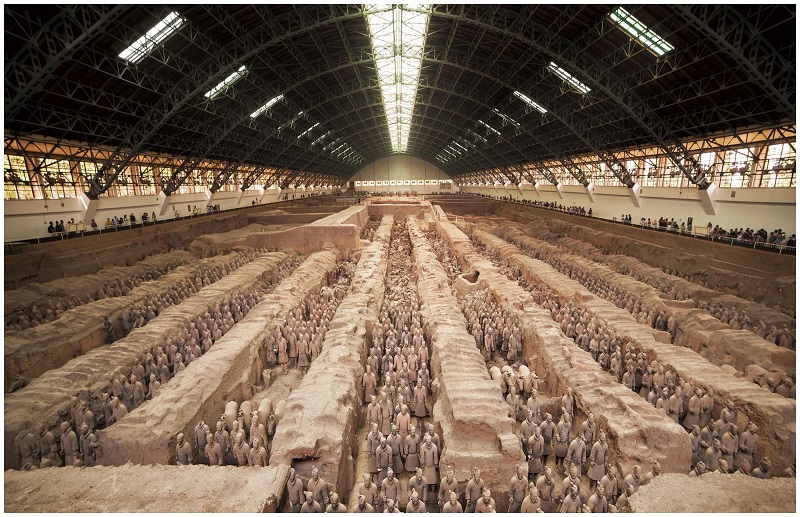Discovered in 1974, Terracotta Warriors and Horses, officially named as Emperor Qinshihuang's Mausoleum Site Museum, is one of the greatest archeological finds in 20th century, and it definitely should be on your bucket list.
Reputed as one of the greatest archaeological finds in the twentieth century and the eighth wonder of the world, buried at 1.5 km east of Qinshihuang’s Mausoleum, Terracotta Army or Terracotta Warriors and Horses (兵马俑) is the funerary object of Emperor Qinshihuang (259~210 BC), the first Emperor of China. In ancient China, people believed in after-world, thus, Emperor Qinshihuang built the Terracotta Warriors and Horses as his underground army to protect his soul in the after-world.

In 1979, Qin Terracotta Warriors and Horses Museum was open to the public on the excavation site. In 1987, the museum, together with the Mausoleum of the First Qin Emperor (they were combined into Emperor Qinshihuang’s Mausoleum Site Museum in 2009, the museum was selected by Trip Advisor as the top 25 museum in the world, the only Asian museum on the list) were listed as World Heritage Sites by UNESCO. After being buried in the ground for over 2,200 year, the Terracotta Army was finally accessible to public.
Latest Updates from Terracotta Warriors and Horses
From 2009 to 2022, the Qin Shihuang Mausoleum Museum conducted the third formal excavation of Pit 1, located in the T23 and T24 quadrants of Pit 1. The excavation included the third part of the pit, including four passageways (G8-G11), three partition walls (Q8-Q10), and the north wall of the pit. The excavation area was approximately 430 square meters. A total of over 220 pottery figures and 16 pottery horses were cleared, as well as four chariots, two drums, one drumstick, one lacquered shield, three quivers, multiple spear shafts, multiple bows, crossbows, and arrow quivers. In addition, a variety of vehicle and weapon components, as well as production tools, were discovered, totaling over a thousand items. The third excavation yielded a number of important discoveries and new insights.

Discovery of Terracotta Warriors and Horses
There is a small village called Xiyang Village and located 1.5km east to the Qinshihuang’s Mausoleum. The southern part of the village was once a persimmon forest. In March 1974, the villagers of Xiyang Village were planned to dig a well in the persimmon forest to fight the drought. During the digging, they found several wrecked terracotta figures and some bronze weapons. The Villagers stopped the digging and informed the local authority immediately. In July 1974, an archaeological team was sent to excavate the discovery site, thus, the magnificent Terracotta Warriors and Horses started to reveal its true face to the public.
The first discovered terracotta warriors pit was called Pit One. In 1976, the State Council decided to establish an exhibition hall on the Pit 1. In the construction progress, Pit 2 was found in the north of the eastern part of the Pit 1. In May of the same year, Pit 3 was found in the north of the western part of the Pit 1. Now, three Pits are all opened to the public, and you can even see the site excavation on the Pit Two.
